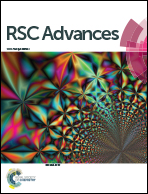Towards implantable porous silicon biosensors
Abstract
Porous silicon (pSi) is a nanomaterial with salient properties for optical biosensor applications. For example, the material displays strong and tunable optical reflectance, and is highly biocompatible and biodegradable. The material is compatible with microfabrication and can be produced in the form of films, membranes and particles. Whilst pSi has been used extensively as a biosensor to accept analytes in or purified from body fluids, it has never been used as an implantable biosensor. In this paper, we advance the understanding of the requirements for pSi-based optical biosensors when incorporated under skin. Reflectance spectra from several different pSi thin film architectures were compared. The optical properties of pSi films were optimised and pSi microcavities with resonances at 850 nm were found to be the most suitable for implantable biosensors. This work will provide useful cues for researchers interested in developing implantable biosensors for human medical and veterinary applications.


 Please wait while we load your content...
Please wait while we load your content...